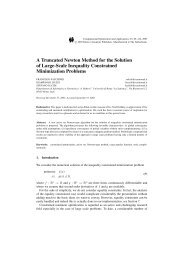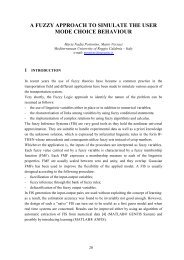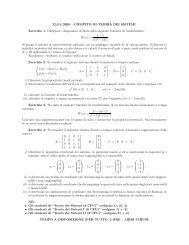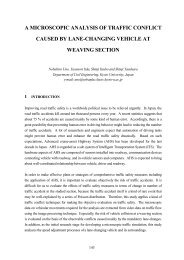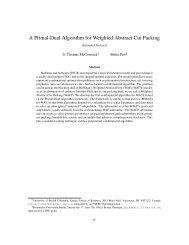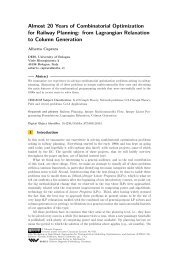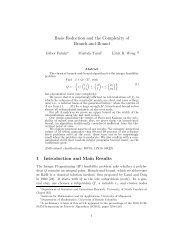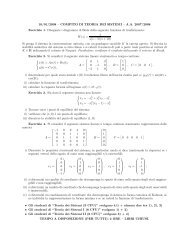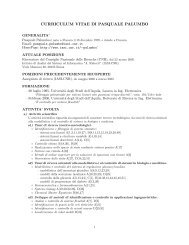OVERVIEW OF ROAD AND MOTORWAY TRAFFIC ... - Iasi.cnr.it
OVERVIEW OF ROAD AND MOTORWAY TRAFFIC ... - Iasi.cnr.it
OVERVIEW OF ROAD AND MOTORWAY TRAFFIC ... - Iasi.cnr.it
Create successful ePaper yourself
Turn your PDF publications into a flip-book with our unique Google optimized e-Paper software.
Overview of road and motorway traffic control strategies 39<br />
For all these reasons, traffic-responsive coordinated strategies, if su<strong>it</strong>ably designed, are<br />
potentially more efficient, but also more costly, as they require the installation, operation,<br />
and maintenance of a real-time control system (sensors, communications, central control<br />
room, local controllers).<br />
2.4. Coordinated Traffic-Responsive Strategies<br />
SCOOT [10] has been applied to over 150 c<strong>it</strong>ies in the Un<strong>it</strong>ed Kingdom and elsewhere.<br />
SCOOT utilizes traffic volume and occupancy measurements from the upstream end of the<br />
network links. It runs in a central control computer and employs a philosophy similar to<br />
TRANSYT.<br />
Model-based optimisation methods. More recently, a number of more rigorous modelbased<br />
traffic-responsive strategies have been developed: OPAC [11], PRODYN [12],<br />
CRONOS [13], RHODES [14]. These strategies do not consider explic<strong>it</strong>ly spl<strong>it</strong>s, offsets, or<br />
cycles. Based on pre-specified staging, they calculate in real time the optimal values of the<br />
next few sw<strong>it</strong>ching times τ i,<br />
i = 1, 2, …, over a future time horizon H, starting from the<br />
current time t and the currently applied stage. The rolling horizon procedure is employed<br />
for real-time application.<br />
Store-and-forward based modelling has been used in various road traffic control<br />
approaches because <strong>it</strong> opens the way to the application of a number of highly efficient<br />
optimization methods (such as linear, quadratic and nonlinear programming). Alternatively<br />
a multivariable regulator approach can be employed such as in the signal control strategy<br />
TUC [15] to calculate in real time the network spl<strong>it</strong>s, while cycle time and offsets are<br />
calculated by other parallel algor<strong>it</strong>hms. TUC was recently implemented and compared in<br />
Southampton, Munich and Chania w<strong>it</strong>h the respective resident strategies SCOOT,<br />
BALANCE and TASS [16].<br />
2.5. Integrated Urban-Freeway Traffic Control<br />
Modern metropol<strong>it</strong>an traffic networks include both urban roads and freeways and employ a<br />
variety of control measures such as signal control, ramp metering, variable message signs<br />
and route guidance. Trad<strong>it</strong>ionally, control strategies for each type of control measure are<br />
designed and implemented separately, which may result in antagonistic actions and lack of<br />
synergy among different control strategies and actions. However, modern traffic networks<br />
that include various infrastructure types, are perceived by the users as an ent<strong>it</strong>y, and all<br />
included control measures, regardless of their type or location, ultimately serve the same<br />
goal of higher network efficiency. Integrated control strategies should consider all control<br />
measures simultaneously towards a common control objective. Desp<strong>it</strong>e some preliminary<br />
works on this subject the problem of control integration is qu<strong>it</strong>e difficult due to <strong>it</strong>s high<br />
dimensions that reflect the geographical extension of the traffic network.



